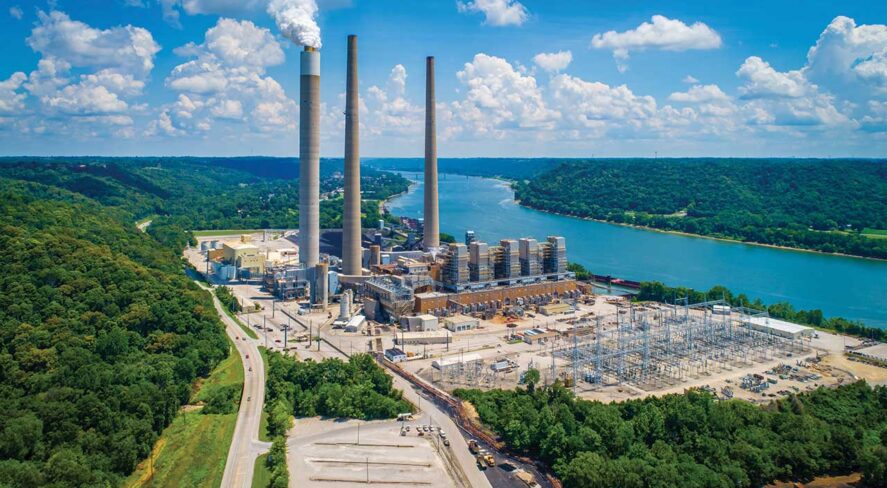The Future of Utilities Security

As attacks increase, artificial intelligence-powered proactive solutions can help to keep the lights on

The recent surge in security incidents at electrical substations and utilities in the United States is alarming. Attacks have increased 71 percent over the past year and experts foresee this unfortunate trend continuing into 2025 and beyond. These events are not just statistics – they are real threats that pose significant risks to citizens, neighborhoods, vital industries and the national economy.
The growing number of attacks on utilities presents a multifaceted challenge for city administrations, public and private entities, and local communities. According to the Electricity Information Sharing and Analysis Center (E-ISAC), attacks of varying types, including gunfire, sabotage, vandalism and security breaches, are increasing and have affected multiple regions of the country.
During a technical conference held by the Federal Energy Regulatory Commission (FERC) and the North American Electric Reliability Corporation (NERC), Eric Rollison, assistant director of the U.S. Energy Department’s Office of Cybersecurity, emphasized the “heightened threat environment” in the industry. A NERC report also noted a significant increase in physical security incidents since 2020, with substantial outages reported in North Carolina, Washington and California. The motivations behind these attacks – from theft to ideological extremism – add complexity, complicating the efforts of law enforcement agencies, local governments and the energy sector to defeat them.
The Indispensability of Electrical Substations
Electrical substations and public utilities are critical to modern society, providing power to residences, offices, healthcare systems and various modes of transportation. A single attack on these vital facilities can trigger widespread disruptions, affecting daily life on a massive scale. For example, gunfire damage to two substations in Moore County, N.C., in December 2022 left 35,430 utility customers without power.
The financial repercussions of these incidents can be severe, as well. The potential impact is extensive, from immediate repair and restoration costs to longer-term consequences, such as revenue losses and operational downtime. Furthermore, following an incident, utilities may face surging insurance premiums, legal liabilities, reputational damage, and regulatory hurdles, which could entail penalties and the need for corrective measures to prevent future occurrences.
Protecting the vast U.S. electrical grid – which comprises more than 55,000 substations and extensive transmission lines – is no small feat. While traditional security measures like fences, video surveillance and lighting provide some level of deterrence, they typically serve a reactive role and fall short of helping organizations stay ahead of evolving threats. In addition, determined perpetrators can bypass physical barriers like fences with relative ease, highlighting the limitations of relying solely on conventional security approaches.
Modern Strategies for Protection
Emerging solutions, particularly proactive strategies and technologies, show promise. Artificial intelligence (AI)-driven video monitoring services are growing in demand, as they have been proven to enable utilities to prevent theft and attacks before damage occurs. Rather than just recording incidents for later review, utilities can use existing camera deployments combined with video analytics to identify and counter threats in real time.
The future of security solutions in the utility sector centers on integrated AI technology because it transforms previously passive systems into proactive platforms. AI can allow video monitoring systems to identify unauthorized movements or actions automatically. For example, intelligent video monitoring combines real-time surveillance with immediate intervention. When a breach is detected, security personnel deliver live, customized voice commands informing the intruder that they have been identified and authorities will be dispatched if they do not leave. In cases where the intruder is noncompliant, operators contact local law enforcement and other relevant parties to ensure a rapid and effective response. This solution is particularly beneficial at remote utility sites where traditional security approaches fall short.
A Secure Energy Future
While the current threat landscape is challenging, innovative technologies and collaborative efforts like public-private partnerships can enhance security. Advanced technologies and services offer immediate intervention capabilities, something not currently available with traditional security methods.
The urgent need for innovative, adaptive security strategies has never been greater. Through investments in technology, protective processes, and a commitment to enhancing security measures, the utilities industry can transform this sizable challenge into a stepping stone for stable, long-term growth. The clock is ticking and the risks are substantial, but a fortified and resilient energy future is within reach.
